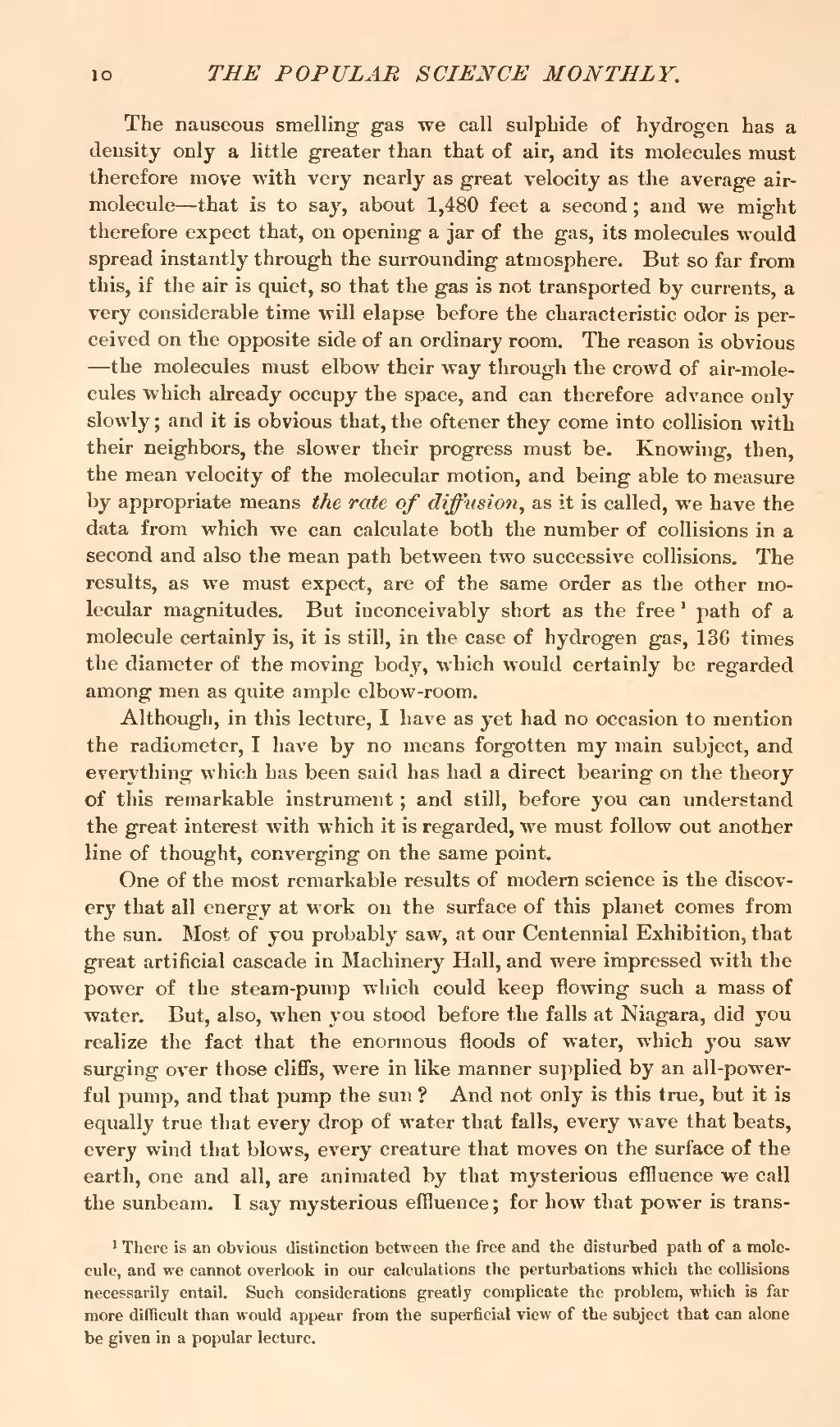The nauseous smelling gas we call sulphide of hydrogen has a density only a little greater than that of air, and its molecules must therefore move with very nearly as great velocity as the average air molecule—that is to say, about 1,480 feet a second; and we might therefore expect that, on opening a jar of the gas, its molecules would spread instantly through the surrounding atmosphere. But so far from this, if the air is quiet, so that the gas is not transported by currents, a very considerable time will elapse before the characteristic odor is perceived on the opposite side of an ordinary room. The reason is obvious—the molecules must elbow their way through the crowd of air-molecules which already occupy the space, and can therefore advance only slowly; and it is obvious that, the oftener they come into collision with their neighbors, the slower their progress must be. Knowing, then, the mean velocity of the molecular motion, and being able to measure by appropriate means the rate of diffusion, as it is called, we have the data from which we can calculate both the number of collisions in a second and also the mean path between two successive collisions. The results, as we must expect, are of the same order as the other molecular magnitudes. But inconceivably short as the free[1] path of a molecule certainly is, it is still, in the case of hydrogen gas, 136 times the diameter of the moving body, which would certainly be regarded among men as quite ample elbow-room.
Although, in this lecture, I have as yet had no occasion to mention the radiometer, I have by no means forgotten my main subject, and everything which has been said has had a direct bearing on the theory of this remarkable instrument; and still, before you can understand the great interest with which it is regarded, we must follow out another line of thought, converging on the same point.
One of the most remarkable results of modern science is the discovery that all energy at work on the surface of this planet comes from the sun. Most of you probably saw, at our Centennial Exhibition, that great artificial cascade in Machinery Hall, and were impressed with the power of the steam-pump which could keep flowing such a mass of water. But, also, when you stood before the falls at Niagara, did you realize the fact that the enormous floods of water, which you saw surging over those cliffs, were in like manner supplied by an all-powerful pump, and that pump the sun? And not only is this true, but it is equally true that every drop of water that falls, every wave that beats, every wind that blows, every creature that moves on the surface of the earth, one and all, are animated by that mysterious effluence we call the sunbeam. I say mysterious effluence; for how that power is trans-
- ↑ There is an obvious distinction between the free and the disturbed path of a molecule, and we cannot overlook in our calculations the perturbations which the collisions necessarily entail. Such considerations greatly complicate the problem, which is far more difficult than would appear from the superficial view of the subject that can alone be given in a popular lecture.
